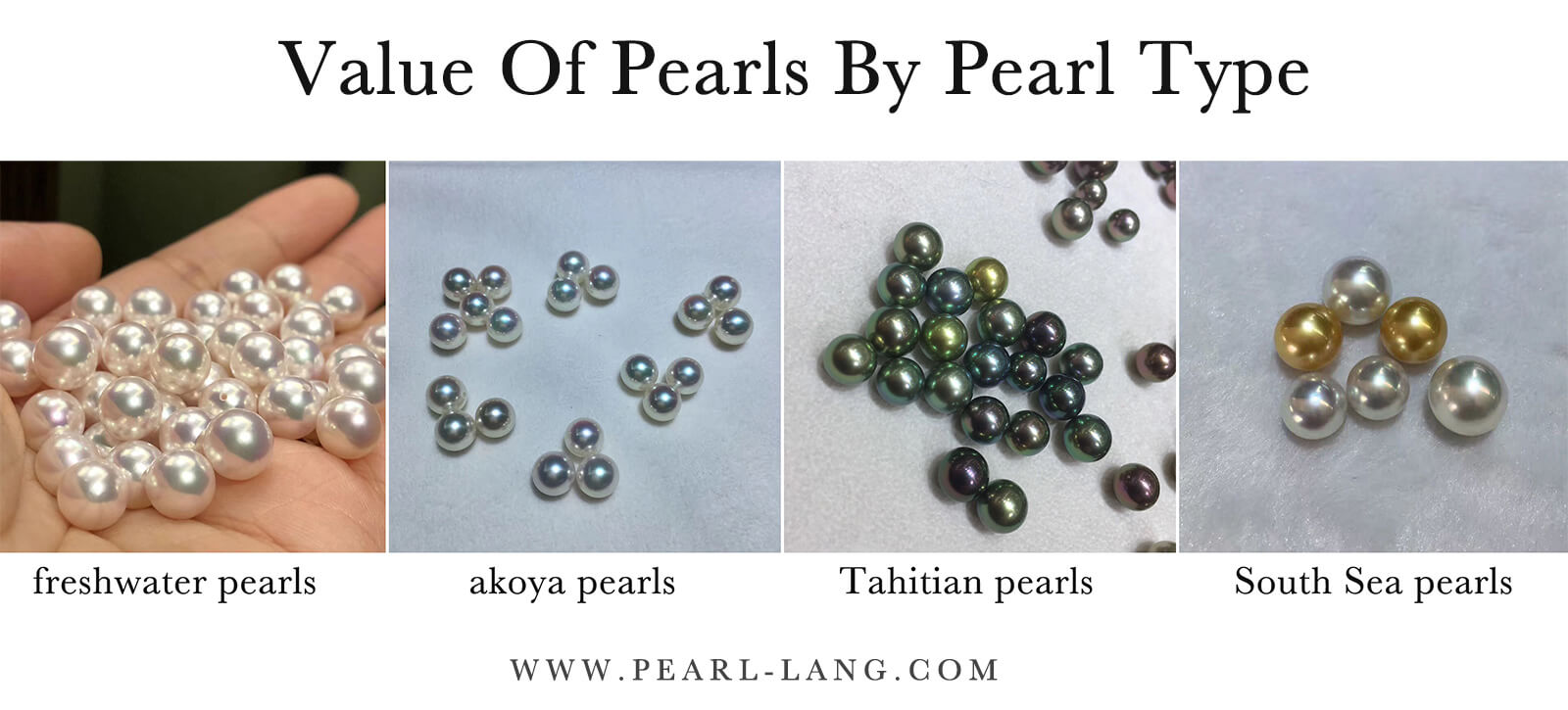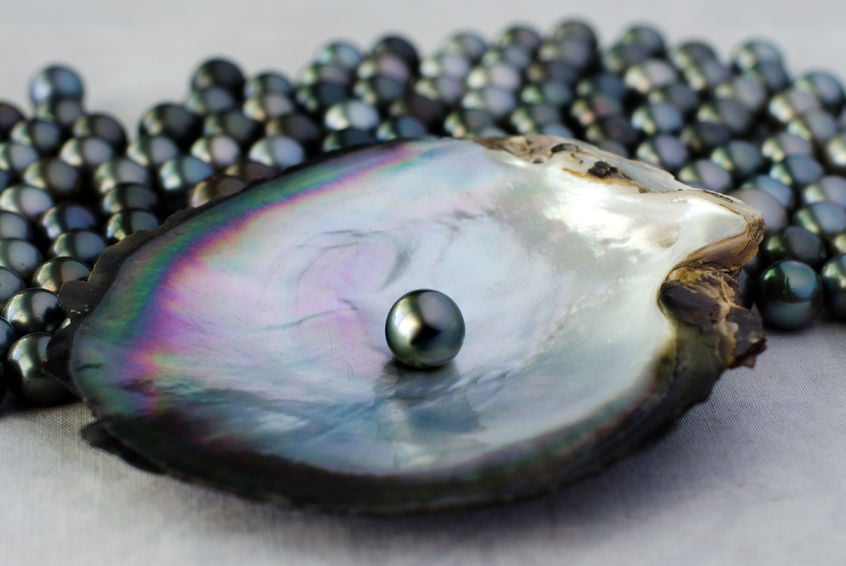How Much are Pearls Worth? Unveiling Their True Value

Pearls can vary greatly in value depending on various factors such as size, shape, color, luster, and quality. The price range for pearls can be anywhere from a few dollars for low-quality freshwater pearls to thousands or even millions of dollars for rare and high-quality natural or cultured pearls.
The value of pearls is also influenced by market demand and trends. It is always recommended to consult with an expert or a reputable jeweler to get an accurate appraisal and determine the worth of specific pearls. Understanding the characteristics and market value of pearls is essential for anyone interested in buying or selling these precious gems.

Credit: www.pearl-lang.com
The Allure Of Pearls
Discover the captivating allure of pearls and unravel the mystery of their value. How Much are Pearls Worth? Pearls are prized for their uniqueness, with prices varying based on size, shape, luster, and origin. Determining the worth of pearls involves assessing these factors to find their true market value.
A Brief History
Pearls have been prized for centuries, with evidence of their use dating back to ancient civilizations such as the Greeks and Romans. The Persian Gulf was once the main source of natural pearls until the 20th century, when the development of pearl farming began in Japan and spread throughout the world. Today, pearls continue to be a symbol of elegance and sophistication, often worn by royalty and celebrities alike.
Why Pearls Captivate Us
There is something about pearls that captures our imagination and draws us in. Perhaps it is their timeless beauty, or the fact that they are created by a living creature. Whatever the reason, pearls have a unique allure that sets them apart from other gemstones. Here are a few reasons why pearls captivate us:
- Natural beauty: Pearls have a lustrous, iridescent quality that makes them stand out from other gemstones.
- Symbolism: Pearls are often associated with purity, innocence, and wisdom, making them a popular choice for weddings and other special occasions.
- Uniqueness: Each pearl is unique, with its own shape, size, and color. This makes them all the more special and valuable.
Whether you are a collector, a fashionista, or simply someone who appreciates natural beauty, pearls are sure to captivate and inspire. So why not add a touch of elegance to your jewelry collection with a stunning pearl necklace, bracelet, or earrings?

Credit: www.thepearlsource.com
Types Of Pearls
When it comes to the value of pearls, understanding the different types available is crucial. Let’s explore the distinctions between freshwater and saltwater pearls, as well as some notable varieties.
Freshwater Versus Saltwater Pearls
Freshwater pearls are typically more affordable than saltwater pearls. They are cultivated in freshwater mussels and come in various shapes and sizes.
Notable Pearl Varieties
- Akoya Pearls: Classic white pearls from saltwater oysters, known for their luster.
- Tahitian Pearls: Dark, exotic pearls from black-lipped oysters in French Polynesia.
- South Sea Pearls: Large and luxurious pearls from white-lipped oysters in Australia and the Philippines.
Factors Influencing Pearl Value
Pearls are a timeless and elegant gemstone that have been treasured for centuries. The value of pearls can vary greatly depending on several factors. Here are the key factors that influence the worth of pearls:
Size And Shape
The size and shape of a pearl play a significant role in determining its value. Generally, larger pearls are more valuable than smaller ones. The most sought-after shape is the perfectly round pearl, as it requires meticulous cultivation and is quite rare. However, other shapes such as oval, teardrop, and baroque pearls can also be highly valuable, depending on their uniqueness and desirability.
Color And Luster
The color and luster of a pearl greatly affect its value and beauty. Pearls come in a wide range of colors, including white, cream, pink, black, and even rare shades like golden or blue. The most valuable pearls have a vibrant and evenly distributed color, with a lustrous surface that reflects light beautifully. Pearls with dull or uneven coloration may have less value.
Surface Quality
The surface quality of a pearl is an important factor in determining its value. Pearls with a smooth, blemish-free surface are highly prized. Minor imperfections such as tiny spots, blemishes, or irregularities may decrease the value of the pearl. However, some types of pearls, like baroque pearls, can have unique surface characteristics that are considered desirable and can increase their value.
Nacre Thickness
The thickness of the nacre, which is the iridescent coating that gives pearls their luster, is another crucial factor in determining their value. Pearls with a thick nacre are generally more valuable and durable, as they are less likely to peel or lose their luster over time. Thinner nacre may result in a less durable pearl that requires more care and maintenance.
Understanding these factors can help you appreciate the value and quality of pearls. Whether you are purchasing pearls for yourself or as a gift, considering these factors will ensure you make an informed decision and choose pearls that are truly worth treasuring.
Cultured Pearls Vs. Natural Pearls
Cultured pearls are created with human intervention, while natural pearls form organically. Pearls’ worth varies based on factors like size, shape, luster, and surface quality. Cultured pearls are generally more affordable than natural pearls due to their controlled production process.
Natural pearls have been prized for their rarity and beauty for thousands of years, commanding exorbitant prices. However, with the introduction of cultured pearls, the market for pearls has become more accessible to the general public. But what is the difference between natural and cultured pearls, and how do these differences impact their value?
The Cultivation Process
Cultured pearls are formed through a process that involves human intervention. A small bead or piece of tissue is inserted into the mollusk to stimulate the production of nacre, the substance that forms the pearl. This process can take several years and produces pearls of consistent size, shape, and color.
Why Natural Pearls Command Higher Prices
On the other hand, natural pearls are formed entirely by chance, without any human intervention. They are the result of a mollusk’s natural defense mechanism against irritants, such as sand or parasites, that enter its shell. Because of this, natural pearls are extremely rare and can vary greatly in size, shape, and color. The rarity of natural pearls is what makes them so valuable. In fact, a single strand of natural pearls can sell for millions of dollars at auction.
Additionally, natural pearls have a unique luster and iridescence that cannot be replicated by cultured pearls. It’s important to note that not all pearls on the market are natural or even cultured. There are also imitation pearls, made from materials such as glass or plastic, that are designed to mimic the appearance of real pearls. These imitation pearls are typically much less expensive than natural or cultured pearls.
In conclusion, while cultured pearls are more affordable and consistent in appearance, natural pearls remain highly coveted for their rarity and unique beauty. Whether you prefer the accessibility of cultured pearls or the luxury of natural pearls, understanding the differences between these types of pearls can help you make an informed decision when purchasing your next piece of pearl jewelry.
Evaluating Pearls: A Buyer’s Guide
Understanding Pearl Grading
Pearls are graded based on various factors such as size, shape, luster, surface quality, and color. Understanding these grading criteria can help buyers make informed decisions. For example, round pearls are considered the most valuable, while baroque pearls, which have irregular shapes, are typically less expensive. Additionally, pearls with high luster and minimal surface blemishes are more desirable and command higher prices.
Practical Tips For Assessing Value
When evaluating pearls, it’s essential to consider their size, shape, color, and surface quality. Practical tips for assessing value include inspecting the pearls under natural light to gauge their luster and looking for any imperfections on the surface. A buyer should also consider the size and uniformity of the pearls in a strand, as well as their color consistency. Furthermore, seeking certification from reputable gemological laboratories can provide assurance of a pearl’s quality and value.
The Market For Pearls Today
The value of pearls in today’s market varies depending on factors such as size, color, luster, and shape. With prices ranging from a few dollars to thousands of dollars per pearl, it’s important to consider the quality and rarity when determining their worth.
Current Trends In Pearl Jewelry
Pearl jewelry has always been a timeless and elegant choice for many individuals. However, the market for pearls has seen some interesting trends in recent years. From classic designs to more modern and unique styles, pearl jewelry has evolved to cater to different tastes and preferences. One of the current trends is the incorporation of pearls into minimalist and dainty pieces, adding a touch of sophistication to everyday outfits. Another popular trend is the use of colored pearls, such as pink or black, to create statement pieces that stand out. These trends reflect the versatility of pearls and their ability to adapt to changing fashion preferences.
How Demand Affects Prices
The value of pearls is greatly influenced by demand in the market. As with any other commodity, when demand for pearls is high, prices tend to increase. Conversely, when demand is low, prices may decrease. The rarity of pearls also plays a significant role in determining their value. Pearls that are naturally formed, particularly those of larger sizes and exceptional quality, are highly sought after and command higher prices.
On the other hand, pearls that are cultured or mass-produced may have a lower price point due to their higher availability. It’s important to note that the quality of the pearls, including factors such as luster, surface quality, shape, and color, also affects their value. Therefore, it is essential to consider both demand and quality when determining the worth of pearls.
Care And Maintenance Of Pearls
Pearls are delicate gems that require proper care to maintain their natural luster and beauty. By following some simple guidelines, you can ensure your pearls remain in pristine condition for years to come.
Keeping Pearls Lustrous
- Avoid contact with perfumes, lotions, and hairsprays to prevent damage to the pearls.
- Wipe pearls gently with a soft, damp cloth after wearing to remove any oils or dirt.
Storage And Cleaning Tips
- Store pearls separately from other jewelry to prevent scratches or abrasions.
- Keep pearls in a soft pouch or wrapped in a clean cloth to protect them from scratches.
- Do not store pearls in an airtight container as they need moisture to maintain their luster.
- Clean pearls with a mild soap and water solution using a soft cloth, then rinse and pat dry gently.
Investing In Pearls
Discover the true value of pearls and how investing in these timeless gems can be a lucrative decision. Understanding the factors that determine the worth of pearls is essential for making informed investment choices. From size and shape to luster and surface quality, various elements contribute to the overall value of pearls.
Pearls As A Financial Investment
Investing in pearls can yield long-term value and elegance. Pearls are timeless and have a universal appeal, making them a stable investment option. Their rarity and unique beauty contribute to their allure. When considering pearls as an investment, it’s essential to understand their market value and potential growth.
Risks And Rewards
Pearls offer a unique blend of risks and rewards. The value of pearls can fluctuate based on market demand and quality. Understanding the market trends is crucial. While pearls can provide significant returns, there is a risk of market saturation and fluctuating prices. Conduct thorough research and seek expert advice before investing in pearls.
Frequently Asked Questions
How Are Pearls Valued?
Pearls are valued based on their size, shape, luster, surface quality, and color. Additionally, factors such as origin, type, and market demand also influence their worth.
What Affects The Value Of Pearls?
The value of pearls is influenced by factors such as size, shape, luster, surface quality, color, type, origin, and market demand. These factors collectively determine the overall worth of pearls.
Why Do Pearl Prices Vary?
Pearl prices vary due to differences in size, shape, luster, surface quality, color, type, origin, and market demand. These variations contribute to the diverse pricing of pearls in the market.
How Can I Determine A Pearl’s Worth?
To determine a pearl’s worth, consider its size, shape, luster, surface quality, color, type, origin, and market demand. Consulting with reputable jewelers or appraisers can also provide valuable insights.
Conclusion
Pearls are valuable due to their rarity and unique beauty. Understanding the factors that determine their worth can help you make informed decisions when buying or selling pearls. Whether it’s the size, luster, color, shape, or surface quality, these attributes contribute to the overall value of pearls.
Always consider these factors and consult with experts to ensure you are making a wise investment.





